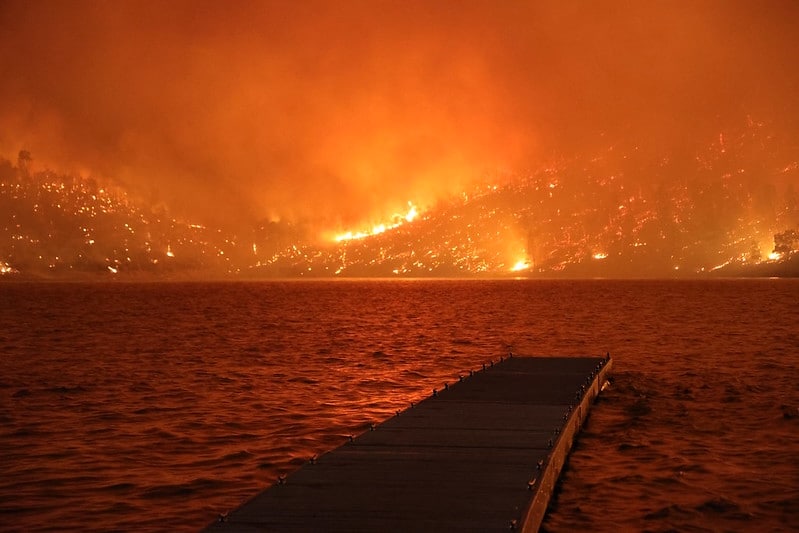This post was originally published on Eco Watch
California officials discovered human remains in a burned Mendocino County home on July 8, reporting the state’s first death of an unusually devastating 2024 wildfire season.
The woman is believed to be 66-year-old Dagmar Stankova, who was last seen using a garden hose to try to extinguish flames outside of her home, as The New York Times reported.
California’s approximately 3,500 wildfires have already burned nearly 220,000 acres this year, said Joe Tyler, director of the California Department of Forestry and Fire Protection (Cal Fire,) at a news conference last week.
While the total number of wildfires is slightly below the state’s five-year average, they have already burned more than five times the average area, which follows a larger trend of worsening natural disasters amid rising temperatures.
“The hots, we say it all the time, are getting a lot hotter,” said California Gov. Gavin Newsom at a news conference last week. “We’re experiencing unprecedented record heat — these heat domes over the entire western United States — over and over and over and over and over again: record-breaking temperatures. Record-breaking heat.”
As of Thursday, the fire, dubbed the Mina Fire, was 97% contained, according to Cal Fire.
California experienced a wet winter in 2023, pulling it out of a drought, but led to a significant amount of grass growth that since dried out, which, along with high winds and record-breaking temperatures, contributed to the fire spread.
The June heat wave came during the 12th consecutive month that Earth’s global average temperature was more than 1.5 degrees Celsius higher than the pre-industrial average, the hottest 12-month stretch on record.
“We are not just in a fire season, we are in a fire year,” Tyler said at the conference, urging caution in dry, hot and windy conditions.
The Thompson Fire in Butte County, California on July 2, 2024. CAL FIRE
Tyler advised California residents and families to prepare for wildfires. “Please create a wildfire action plan that addresses escape routes, meeting points, animal arrangements and a communication plan with your family,” he said. “Listen to the guidance of law enforcement and our firefighters for evacuation warnings and orders, prepare your home to defend from an advancing wildfire.”
The post California’s Devastating Wildfire Season: First Fatality Reported, Already 5x More Acres Burned Than Average appeared first on EcoWatch.





0 Comments